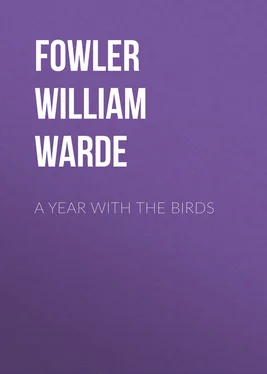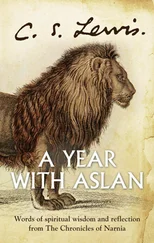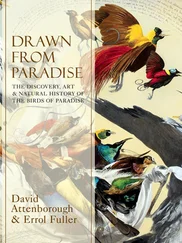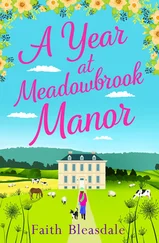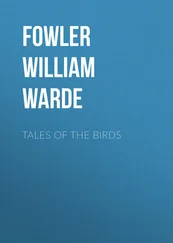William Fowler - A Year with the Birds
Здесь есть возможность читать онлайн «William Fowler - A Year with the Birds» — ознакомительный отрывок электронной книги совершенно бесплатно, а после прочтения отрывка купить полную версию. В некоторых случаях можно слушать аудио, скачать через торрент в формате fb2 и присутствует краткое содержание. Жанр: foreign_antique, foreign_prose, на английском языке. Описание произведения, (предисловие) а так же отзывы посетителей доступны на портале библиотеки ЛибКат.
- Название:A Year with the Birds
- Автор:
- Жанр:
- Год:неизвестен
- ISBN:нет данных
- Рейтинг книги:4 / 5. Голосов: 1
-
Избранное:Добавить в избранное
- Отзывы:
-
Ваша оценка:
- 80
- 1
- 2
- 3
- 4
- 5
A Year with the Birds: краткое содержание, описание и аннотация
Предлагаем к чтению аннотацию, описание, краткое содержание или предисловие (зависит от того, что написал сам автор книги «A Year with the Birds»). Если вы не нашли необходимую информацию о книге — напишите в комментариях, мы постараемся отыскать её.
A Year with the Birds — читать онлайн ознакомительный отрывок
Ниже представлен текст книги, разбитый по страницам. Система сохранения места последней прочитанной страницы, позволяет с удобством читать онлайн бесплатно книгу «A Year with the Birds», без необходимости каждый раз заново искать на чём Вы остановились. Поставьте закладку, и сможете в любой момент перейти на страницу, на которой закончили чтение.
Интервал:
Закладка:
When the first balmy breath of spring brings the celandines into bloom on the hedge-bank, and when the sweet violets and primroses are beginning to feel the warmth of the sun, you may always look out for the Chiff-chaff on the sheltered side of a wood or coppice. As a rule, I see them before I hear them; if they come with an east wind, they doubtless feel chilly for a day or two, or miss the plentiful supply of food which is absolutely necessary to a bird in full song. Thus in 1884, I noted March 20 as the first day on which I saw the Chiff-chaff, and March 23 as the first on which I heard him. The next year, the month of March being less genial, I looked and listened in vain till the 31st. On that day I made a circuit round a wood to its sunny side, sheltered well from east and north, and entering for a little way one of these grassy ‘rides’ which are the delight of all wood-haunting birds, I stood quite still and listened. First a Robin, then a Chaffinch broke the silence; a Wood-pigeon broke away through the boughs; but no Chiff-chaff. After a while I was just turning away, when a very faint sound caught my ear, which I knew I had not heard for many months. I listened still more keenly, and caught it again; it was the prelude, the preliminary whisper, with which I have noticed that this bird, in common with a few others, is wont to work up his faculties to the effort of an outburst of song. In another minute that song was resounding through the wood.
No one who hails the approach of spring as the real beginning of a new life for men and plants and animals, can fail to be grateful to this little brown bird for putting on it the stamp and sanction of his clear resonant voice. We may grow tired of his two notes – he never gets beyond two – for he sings almost the whole summer through, and was in full voice on the 25th of September in the same year in which he began on March 23rd; but not even the first twitter of the Swallow, or the earliest song of the Nightingale, has the same hopeful story to tell me as this delicate traveller who dares the east wind and the frost. They spend the greater part of the year with us; I have seen them still lurking in sheltered corners of the Dorsetshire coast, at the beginning of October, within sound of the sea-waves in which many of them must doubtless perish before they reach their journey’s end. And now and then they will even pass the winter with us: this was the case with one which took up his sojourn at Bodicote, near Banbury, in a winter of general mildness, though not unbroken, if I recollect right, by some very sharp frosts.
The Willow-warbler follows his cousin to England in a very few days, and remains his companion in the trees all through the summer. He has the same brownish-yellow back and yellowish-white breast, but is a very little larger, and sings a very different song, which is unique among all British birds. Beginning with a high and tolerably full note, he drops it both in force and pitch in a cadence short and sweet, as though he were getting exhausted with the effort; for that it is a real effort to him and all his slim and tender relations, no one who watches as well as listens can have a reasonable doubt. This cadence is often perfect, by which I mean that it descends gradually, not of course on the notes of our musical scale, by which no birds in their natural state would deign to be fettered, but through fractions of one or perhaps two of our tones, and without returning upwards at the end; but still more often, and especially, as I fancy, after they have been here a few weeks, they take to finishing with a note nearly as high in pitch as that with which they began. 14 14 The song ceases about mid-June, and is not renewed till August: it is then usually so wanting in force as to be hardly recognizable. See Note B . at end of Volume.
This singular song is heard in summer term in every part of the Parks, and in the grass beneath the trees there must be many nests; but these we are not likely to find except by accident, so beautifully are they concealed by their grassy roofs. Through the hole in the upper part of the side you see tiny eggs, speckled with reddish brown, lying on a warm bedding of soft feathers; one of these was built last May in the very middle of the lawn of the Parsonage-house at Ferry-Hincksey, and two others of exactly the same build, one a Chiff-chaff’s, were but a little way outside the garden-gate, and had escaped the sharp eyes of the village boys when I last heard of them. Though from being on the ground they probably escape the notice of Magpies and Jackdaws and other egg-devouring birds, these eggs and the young that follow must often fall a prey to stoats and weasels, rats and hedgehogs. That such creatures are not entirely absent from the neighbourhood of the Parks, I can myself bear witness, having seen one morning two fine stoats in deadly combat for some object of prey which I could not discern, as I was divided from them by the river. The piping squeaks they uttered were so vehement and loud, that at the first moment I mistook them for the alarm-note of some bird that was strange to me. In July, 1886, I saw a large stoat playing in Addison’s Walk, when few human beings were about, and the young birds, newly-fledged, were no doubt an easy prey.
One word more before we leave the Tree-warblers. In front of my drawing-room window in the country are always two rows of hedges of sweet peas, and another of edible peas; towards the end of the summer some little pale yellow birds come frequently and climb up and down the pea-sticks, apparently in search of insects rather than of the peas. These are the young Willow-warblers, which after their first moult assume this gently-toned yellow tint; and very graceful and beautiful creatures they are. I have sometimes seen them hover, like humming-birds, over a spray on which they could not get an easy footing, and give the stem or leaves a series of rapid pecks.
We have to walk but a little further on to hear or see at least two of our first group, the Sylviae , or fruit-eating warblers. As we pass into the Park by the entrance close to the house of the Keeper of the Museum, we are almost sure, on any sunny day, to hear both Blackcap and Garden-warbler, and with a little pains and patience, to see them both. These two (for a wonder) take their scientific names from the characteristics by which sensible English folk have thought best to name them; the Blackcap being Sylvia atracapilla , and the Garden-warbler Sylvia hortensis . Mr. Ruskin says, in that delicious fragment of his about birds, called Love’s Meinie , that all birds should be named on this principle; and indeed if they had only to discharge the duty which many of our English names perform so well, viz. that of letting English people know of what bird we are talking, his plan would be an excellent one. Unluckily, Ornithology is a science, and a science which embraces all the birds in the world; and we must have some means of knowing for certain that we shall be understood of all the world when we mention a bird’s name. This necessity is well illustrated in the case of the warblers. So many kinds of them are there, belonging to all our three groups, in Europe alone, not to speak of other parts of the world, that even a scientific terminology and description upon description have not been able to save the birds from getting mixed up together, or getting confounded with their own young, or with the young of other birds.
If the Blackcap were not a Sylvia, he could not well be scientifically named after his black head, for other birds, such as Titmice, have also black heads, and I have frequently heard the Cole Tit described as the Blackcap. In any case he should perhaps have been named after his wonderful faculty of song, in which he far excels all the other birds of our three groups. Most people know the Blackcap’s song who have ever lived in the country, for you can hardly enter a wood in the summer without being struck by it; and all I need do here is to distinguish it as well as I can from that of the Garden-warbler, which may easily be mistaken for it by an unpractised ear, when the birds are keeping out of sight in the foliage, as they often most provokingly will do. Both are essentially warblers; that is, they sing a strain of music, continuous and legato , instead of a song that is broken up into separate notes or short phrases, like that of the Song-thrush, or the Chiff-chaff. But they differ in two points: the strain of the Blackcap is shorter, forming in fact one lengthened phrase “in sweetness long drawn out,” while the Garden-warbler will go on almost continuously for many minutes together; and secondly, the Blackcap’s music is played upon a mellower instrument. The most gifted Blackcaps – for birds of the same species differ considerably in their power of song – excel all other birds in the soft quality of their tone, just as a really good boy’s voice, though less brilliant and resonant, excels all women’s voices in softness and sweetness. So far as I have been able to observe, the Blackcap’s voice is almost entirely wanting in that power of producing the harmonics of a note which gives a musical sound its brilliant quality; but this very want is what produces its unrivalled mellowness.
Читать дальшеИнтервал:
Закладка:
Похожие книги на «A Year with the Birds»
Представляем Вашему вниманию похожие книги на «A Year with the Birds» списком для выбора. Мы отобрали схожую по названию и смыслу литературу в надежде предоставить читателям больше вариантов отыскать новые, интересные, ещё непрочитанные произведения.
Обсуждение, отзывы о книге «A Year with the Birds» и просто собственные мнения читателей. Оставьте ваши комментарии, напишите, что Вы думаете о произведении, его смысле или главных героях. Укажите что конкретно понравилось, а что нет, и почему Вы так считаете.
